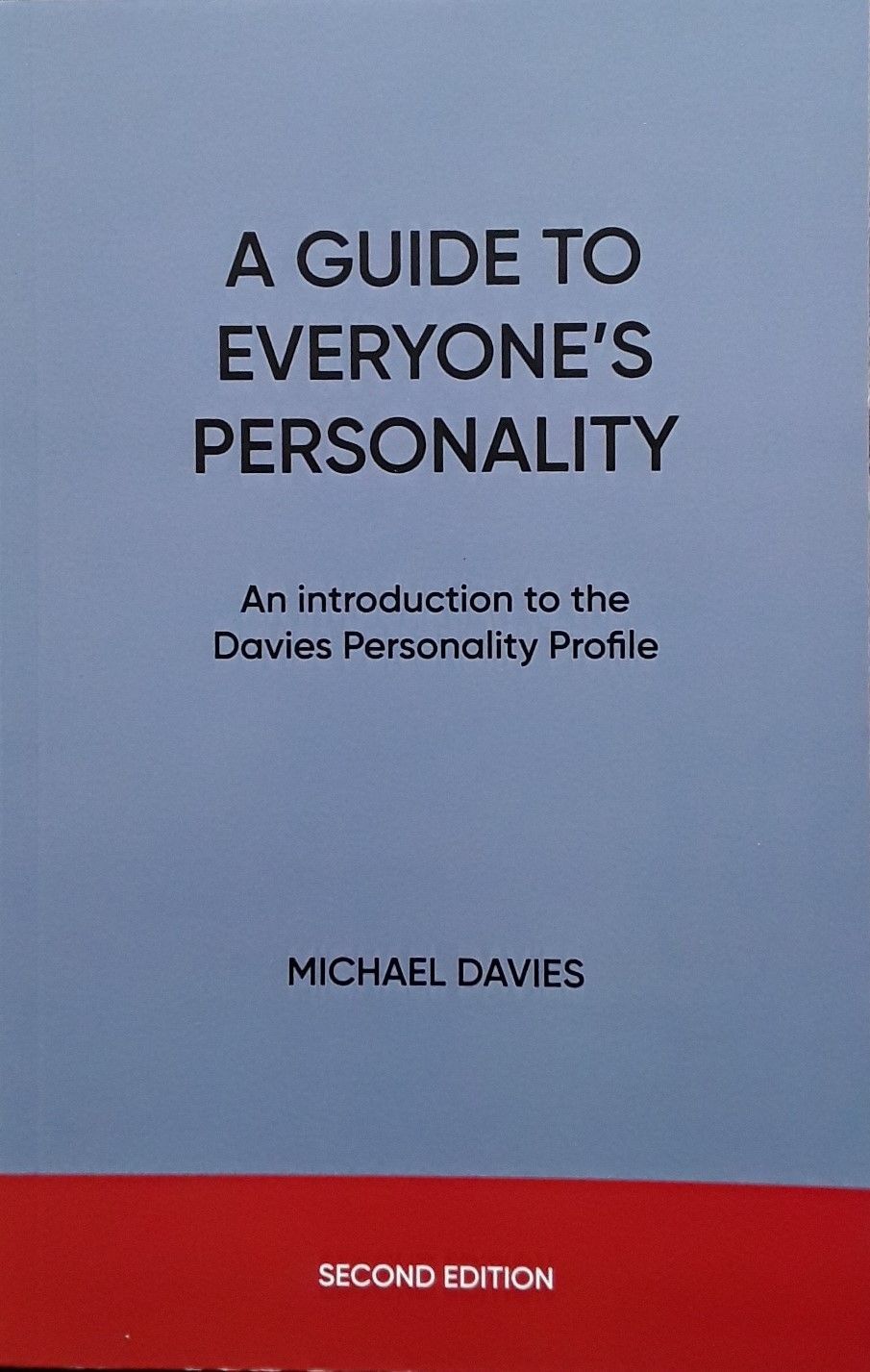A Guide to Everyone's Personality:
An introduction to the Davies Personality Profile

Back Cover Contents (Extract)
KNOW YOURSELF
UNDERSTAND YOUR COLLEAGUES
MAKE BETTER DECISIONS AT WORK
A Guide to Everyone’s Personality simply and clearly explains everyone’s personality using everyday language. The author:
- Shows how to use the Davies Personality Profile in order to describe everyone’s personality
- Recognises everyone’s individuality
- Illustrates personality by numerous examples taken from the lives of the most famous people in the Western World
- Explains how to use this knowledge to improve significantly individual and organisational performance
Copyright © 2024 Michael James Davies, All Rights Reserved
Index to About the Book
Back Cover Contents
Introduction (Extract)
Contents
About the author
Introduction (Extract)
Personal relationships take up much of our time at work. We are constantly being assessed or making judgements about people. On the basis of these judgements, we have to take vital decisions. Organisations and careers succeed or fail depending on the quality of the decisions made about people. Good decisions about people at work significantly improve performance and increase profit. Bad decisions about people at work are very expensive in time and money. Opportunities are lost and relationships at work damaged. We all need to know ourselves and understand others. We need to understand our own and other people’s personalities. Fortunately, our personalities consist of recognisable characteristics. With practice and experience, these can be understood and identified.
"This book provides many unique insights into everyone’s personality ..."
This book provides many unique insights into everyone’s personality and supplies:
- Individuals with the knowledge to take the right decisions for themselves and about other people
- Organisations with a comprehensive personality assessment system for employee recruitment, placement and promotion
- A straightforward system for the creation of highly effective organisations
It is a resource no organisation can afford to ignore. The time, effort and money spent on understanding personality will repay itself countless times in better performance, reduced costs and increased profit.
" ... there are numerous examples of personality based on real people. For the most part, these examples are taken from the lives of famous historical individuals."
Everyone is very busy. Consequently, the ideas in this book are explained as simply as possible. The language is straightforward and non-technical. There are many diagrams and tables which emphasise the key points. The best way to understand personality is with a combination of theory, examples and practice. In this work, there are numerous examples of personality based on real people. For the most part, these examples are taken from the lives of famous historical individuals.
The chapters are intended to be read in order from the beginning. It is certainly easiest to start at Chapter 1 and read each of the following chapters in turn, because later chapters use ideas explained earlier in the book. An essential aim of this book is to show how we can apply our understanding of personality to improve significantly our decisions at work. At the end of most chapters, there are summaries and suggestions for practical exercises which may help you to remember and use the ideas. However, the use of this material is optional and your choice.
"One kind of personality is neither better nor worse than another. Our personalities are just different. This is a point of fundamental importance."
The contents of this work apply equally to the personalities of men and women. Taken as a whole, there are some differences of emphasis between men’s and women’s personalities, but, in this book, we are dealing with men and women as individuals and not groups. It cannot be stressed too strongly that in understanding personality we are not judging the merits of an individual’s personality. One kind of personality is neither better nor worse than another. Our personalities are just different. This is a point of fundamental importance.
Copyright © 2024 Michael James Davies, All Rights Reserved
Contents
Introduction
1 Sociability disposition
2 Emotion disposition
3 Ambition disposition
4 Curiosity disposition
5 Uncertainty disposition
6 Ways of thinking dimension
7 Ways of interacting dimension
8 Ways of relating dimension
9 Social interests dimension
10 Attitudes to the future dimension
11 Social attitudes
12 Lifestyles
13 Social roles
14 Intelligence span
15 Personality assessment headings
16 The Davies personality profile
17 Personality assessment using the Davies personality profile
18 Explanation of personality
19 Children’s personalities
20 Life experiences
21 Self-awareness
22 Job specification using the Davies personality profile
23 Effective decision making units (using the Davies personality profile)
24 Evidence
25 Conclusion
Glossary
Further reading
Index
Copyright © 2024 Michael James Davies, All Rights Reserved
Other books by Michael Davies
Societies from Hunter-gatherer to Industrial
The Management of the COVID-19 Pandemic in England 2020-22
See https://www.socialsciencesunified.uk
About the author
Michael Davies’s many years of senior management experience was in an international group where he managed a large finance department.
He has also taught business subjects from access to professional and MA courses and published in leading accountancy journals.